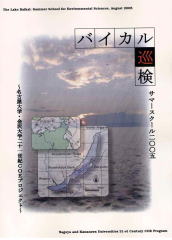Clarification of the mechanical
change of crust and
the fracture process for rocks
and ground materials
Chikayoshi
Yatomi, Ph. D., Professor |
 |
In order to prevent the disaster and to form the safe by an earthquake or a landslide of ground, it is very important to make clear the mechanical mechanism for such phenomena.
Up to now in the finite element method to solve the problem of the extension of fault and the slip surface of ground, a discontinuity of the displacement is given along the sides of finite elements. This method restricts the direction of the discontinuity to a beforehand given direction along the sides of finite elements. To get the reasonable direction we need an awkward remeshing of the finite elements at each time of the extension. We then study a new finite element method in which the discontinuities can across the elements and the remeshing is not necessary to model a smooth extension of the discontinuity as in Figure. When we solve the problem of the extension of fault and the slip surface in an elastic-plastic material by using a conventional explicit incremental method, the total CPU time often becomes much long with the increasing the time step and the error of the solution also become very large. We then study a new method of the implicit finite element analysis of solid / water coupling problems in an elastic-plastic material. In our recent examples for a basic solid/water coupling problem, the implicit method shows a high accuracy and much reducing the total CPU time.



